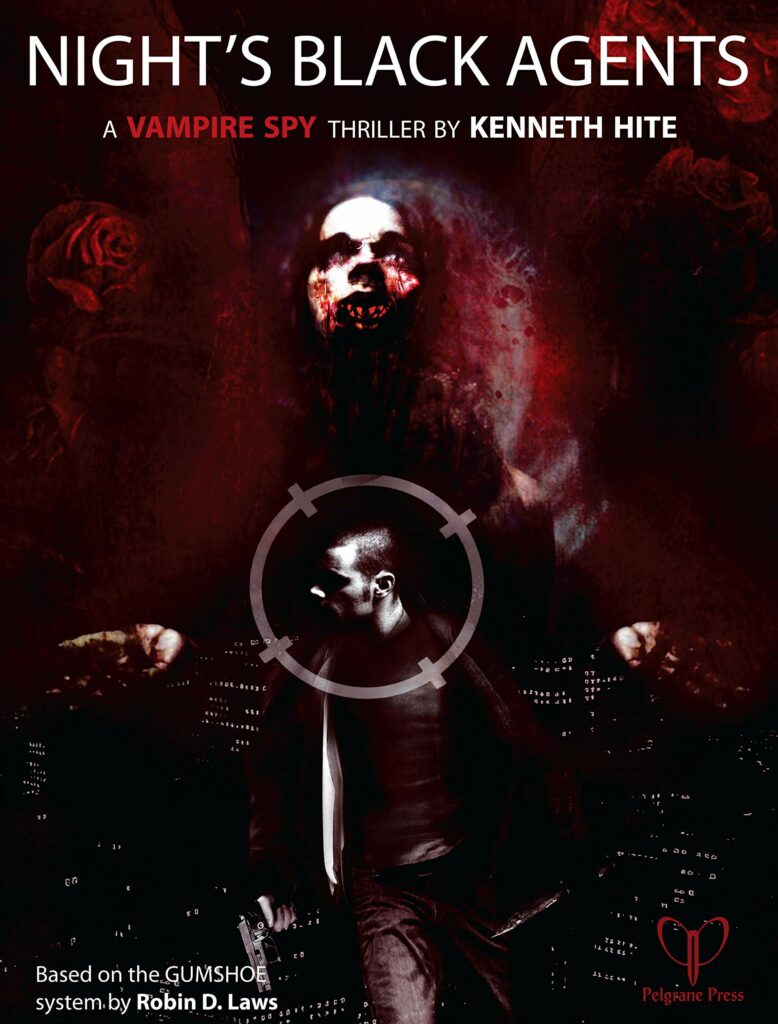I started to feel that I didn’t know roleplaying games well enough so I came up with the plan to read a roleplaying game corebook for every year they have been published. Selection criteria is whatever I find interesting.

Night’s Black Agents is a vampire spy thriller roleplaying game by Kenneth Hite. It’s based on the Gumshoe system also familiar from games like Trail of Cthulhu, with the purpose of facilitating investigation. Night’s Black Agents is at the nexus of many different strands of design influence. The problems Gumshoe solves go back all the way to Call of Cthulhu and the core issue of a game that stalls if the characters fail to find an important clue.
Hite is also a lead designer on Vampire: the Masquerade 5th Edition and many of the ideas in that game can be traced back to Night’s Black Agents. Vampire occupies an interesting position in the roleplaying field in the sense that while it was wildly successful especially in the Nineties, games influenced by it shied away from copying its core idea: A roleplaying game about vampires.
I’ve wondered why this is, given that the fantasy roleplaying of Dungeons & Dragons has been copied far and wide. My guess is that Vampire’s worldbuilding is so exhaustive, it gobbled up every single bit of vampire lore and terminology, making it hard to design anything even vaguely similar without seeming to copy its fiction directly.
Night’s Black Agents is a game about hunting vampires. The characters are intelligence agents who have uncovered evidence of a vampiric conspiracy and decide to take it down on their own. Their experience and spycraft pitted against the inhuman terror of the undead.
Hite has a sourcebook for Vampire coming out soon called Second Inquisition. It’s interesting to look at setting elements introduced in the 5th edition, especially the all-encompassing and monolithic Second Inquisition, which represents intelligence agencies around the world realizing that vampires exist and move against them.
Reading the 5th edition and Night’s Black Agents, you can see a common theme being developed in both games, but from different perspectives and in service of different play experiences.
Night’s Black Agents has an interesting stylistic quality: It often explains its design choices, presents alternative options that change the way the mechanics and the game works and connects itself to past design tradition. In this sense, it feels like a “designer’s design”. If you want to geek on the finer intricacies of the Gumshoe system, the book obligingly explains its thinking.